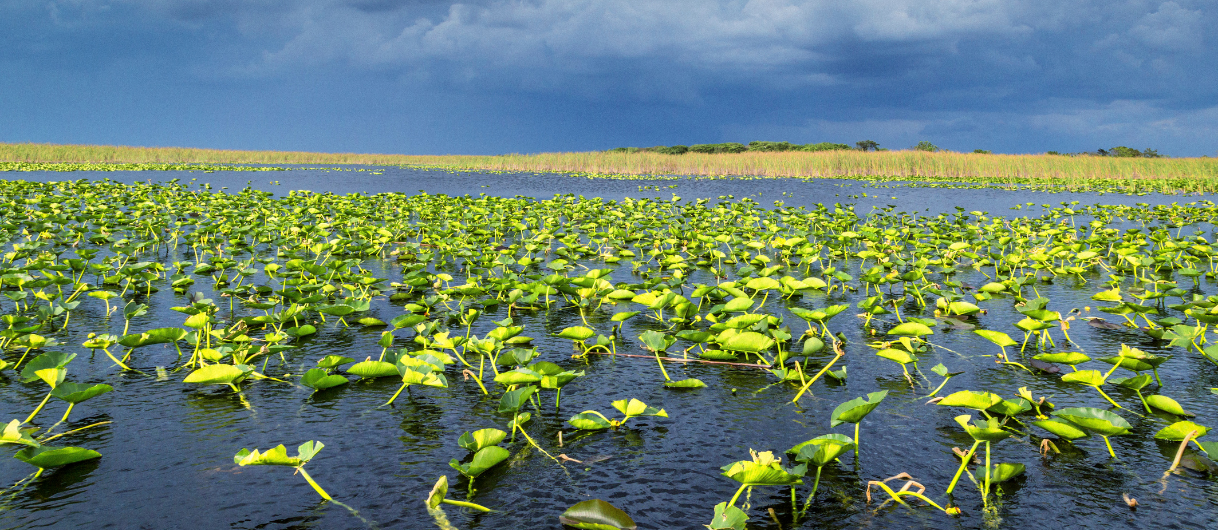Judge tosses Big Sugar lawsuit – but a big question remains
Judge tosses Big Sugar lawsuit – but a big question remains

Big Sugar just took it on the chin in court.
But one of their central issues has yet to be fully addressed — and could have big implications for water storage south of Lake Okeechobee.
In a March 21 ruling, Judge Donald M. Middlebrooks, U.S. District Judge of the Southern District of Florida, granted a motion for summary judgment from the U.S. Army Corps of Engineers, and rejected a motion for the same from three sugar companies suing the Corps.
The case is extraordinarily complex, as Middlebrooks noted in his opinion. But it boiled down to a contention by sugar companies that they are being or might be robbed of water in Lake Okeechobee which they claim is legally theirs.
The three sugar companies filed nearly identical lawsuits that were consolidated into a single action. All claimed that the Lake Okeechobee Regulation Schedule adopted by the Corps in 2007 — known as LORS 08 — violated the “Savings Clause” contained in the Water Resources Development Act (WRDA) of 2000, pertaining to the implementation of CERP, the Comprehensive Everglades Restoration Plan.
The WRDA 2000 legislation stipulated that unless or until new sources of water are found, neither the federal government nor the state may “eliminate or transfer existing legal sources of water” for agriculture.
In effect, the sugar companies assert that the same quantity of water available to them on the date WRDA 2000 was enacted must be available now. And LORS 08 cut into that supply by lowering the level of the lake, they claimed.
Judge Middlebrooks dismissed the companies’ argument. The Corps, he noted, viewed the adoption of LORS 08 as an “intervening non-CERP activity” — meaning that not every decision made on lake management is or can be viewed as part of CERP.
Middlebrooks noted that the Corps adopted LORS 08 in response to safety concerns about the Herbert Hoover Dike around Lake Okeechobee, and that the sugar companies themselves “implicitly concede” that the initial adoption of LORS 08 did not violate the Savings Clause. But, Big Sugar claimed, they thought LORS 08 was temporary. It was only when the Corps began utilizing it as a long-term plan that it began to violate the Savings Clause.
Middlebrooks rejected that line of reasoning. “If the Corps did not violate the Savings Clause in 2007 by implementing LORS 2008, then it does not now,” wrote Middleton in his opinion. “It cannot be that there is an exception to the Savings Clause that says: temporary violations are okay, but not permanent ones.
Middlebrooks also questioned why the sugar interests waited until 2021 — 14 years after LORS 08 was adopted — to sue: “…if (the sugar companies) wanted to challenge LORS 2008, they had plenty of time to do so … Any sense of ‘unfairness’ raised by the Corps’ continued implementation of LORS 2008 is too little, too late.”
The second key contention in the case, however, was not so easily dismissed.
That claim revolves around the EAA Reservoir project, the 10,500-acre reservoir and in particular the 6,500-acre stormwater treatment area (STA) now under construction south of Lake O.
The sugar interests argued that once the STA is completed, it cannot be operated independently of the reservoir unless the Corps conducts an environmental impact study which would, among other things, determine if it violates the Savings Clause.
In other words, by flowing water from the lake into the STA — without a reservoir to hold water that might make up the difference — “water supply” interests could be shorted.
Here Middlebrooks seemed inclined to agree, until attorneys for the Corps, in court, said they do not intend to operate the STA independently. Any such decision could not be made until the Corps’ “non-federal partners,” the South Florida Water Management District, obtains permits to operate the STA. That process would involve studies to determine whether standalone operations comply with the Savings Clause.
Until then, the Corps can flow enough water into the STA to grow the vegetation — but no more.
“This gave Plaintiffs largely what they had been asking for: assurances,” wrote Middlebrooks. “Should the Corps decide to operate the STA before the Reservoir, it must abide by its representations in this case.”
This, then, is an important factor to bear in mind when considering the EAA project. Completion of the STA does not mean that STA will be utilized, at least not immediately. And if an attempt to use it before the reservoir is complete produces an environmental impact study showing it WOULD violate the Savings Clause — the STA may have to sit gathering dust until the reservoir itself is finished.
This is not what advocates of the EAA project or conservationists in general have hoped for — but the ruling in this case makes it clear that’s the way it’s going to be.
VoteWater and our allies at Friends of the Everglades have questioned the design of the EAA Reservoir and its ability to clean water to federal standards before water reaches the southern Everglades.
Middlebrooks’ ruling creates even more questions about the ultimate effectiveness of the $4 billion project. Stay tuned.


